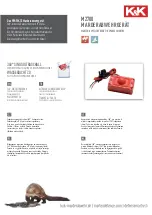
DS1067-063D
37
LBT20064
3.3.4
The subdivision into zones
There are cases in which it is not necessary to install the alarm system everywhere or, examining the problem from
another point of view, there may be occasions in which it may be preferable to be able to move freely in certain areas
while leaving other protected. In other words, being able to zone the existing system, without having to plan two
independent ones. The purpose is obviously to increase both security and convenience.
This result can be obtained by configuring the system in
zones
. The zones are logical, not physical, groups of detectors,
sirens, keypads, readers etc., each of which can be associated with more than one zone if desired. It is better the
remember that when the system is enables, the detectors are not activated, but rather the control panel is commanded to
consider the information received by them as attempted intrusion if they reflect specific parameters.
Here is a simple example. The magnetic detector always sends a signal to the control panel every time the door is
opened. So why doesn't the alarm go off with the system disabled? This happens because the control panel, during
processing, also knows that the system is disabled and so ignores the signal received. The control panel can be even
more intelligent. If a "bell" function was activated for a specific detector during the system configuration phase (the name
used by the control panel may differ, for example the 1067 control panels
use the term “gong”, but what matters is what
the function does), then when the system is disarmed every time that detector is activated, opening the door or walking in
front of if will cause the control panel to activate a sound. The signal from the magnetic contact is physically the same,
but the way the control panel interprets it changes, producing different results.
Here is how and where zones can be conveniently used.
A first opportunity was illustrated in
How to protect areas and people
. In that case it was best to make at least two zones:
one for perimeter protection and the other for trap protection. In this way, at night it is possible to move freely about the
house while being protected from attempted night-time intrusions. When there is no one at home, both the zones, can be
armed to raise the level of security.
Other examples of how the system can be divided into zones are:
Home with separate garage. In this case three zones can be configured: perimeter, trap, and garage.
Residence and professional office or shop located in the same building and formally separated from each other. In
this case, three zones may be configured: residence perimeter, residence and perimeter trap, and office/shop trap.
Office and warehouses: In this care even more zones can be configured for the offices as well as the warehouses in
order to provide the utmost flexibility in protection without hampering work activities.
As a general rule, when in doubt, lean toward creating one zone more rather than having one less.
Figure 7 - Subdivision into zones
In the example above, the apartment is a single zone, while the rooms on the ground floor, which are used for other
activities, belong to different zones. In this way it will be possible to protect the warehouse and offices with the alarm
system even when the store is open.
IMPORTANT!
Be careful about protecting the same areas by detectors belonging to different zones because
there may be a risk of false alarms caused by a detector left armed when the user thought all of them had been
disarmed.
The coexistence of any zone with the perimeter protection zone is at low risk because of the very nature of its
use.
ZONE 3
ZONE 1
ZONE 6
ZONE 2
ZONE 5
ZONE 4
Содержание 1067/024
Страница 118: ...DS1067 063D 118 LBT20064...
Страница 119: ...DS1067 063D 119 LBT20064...
















































